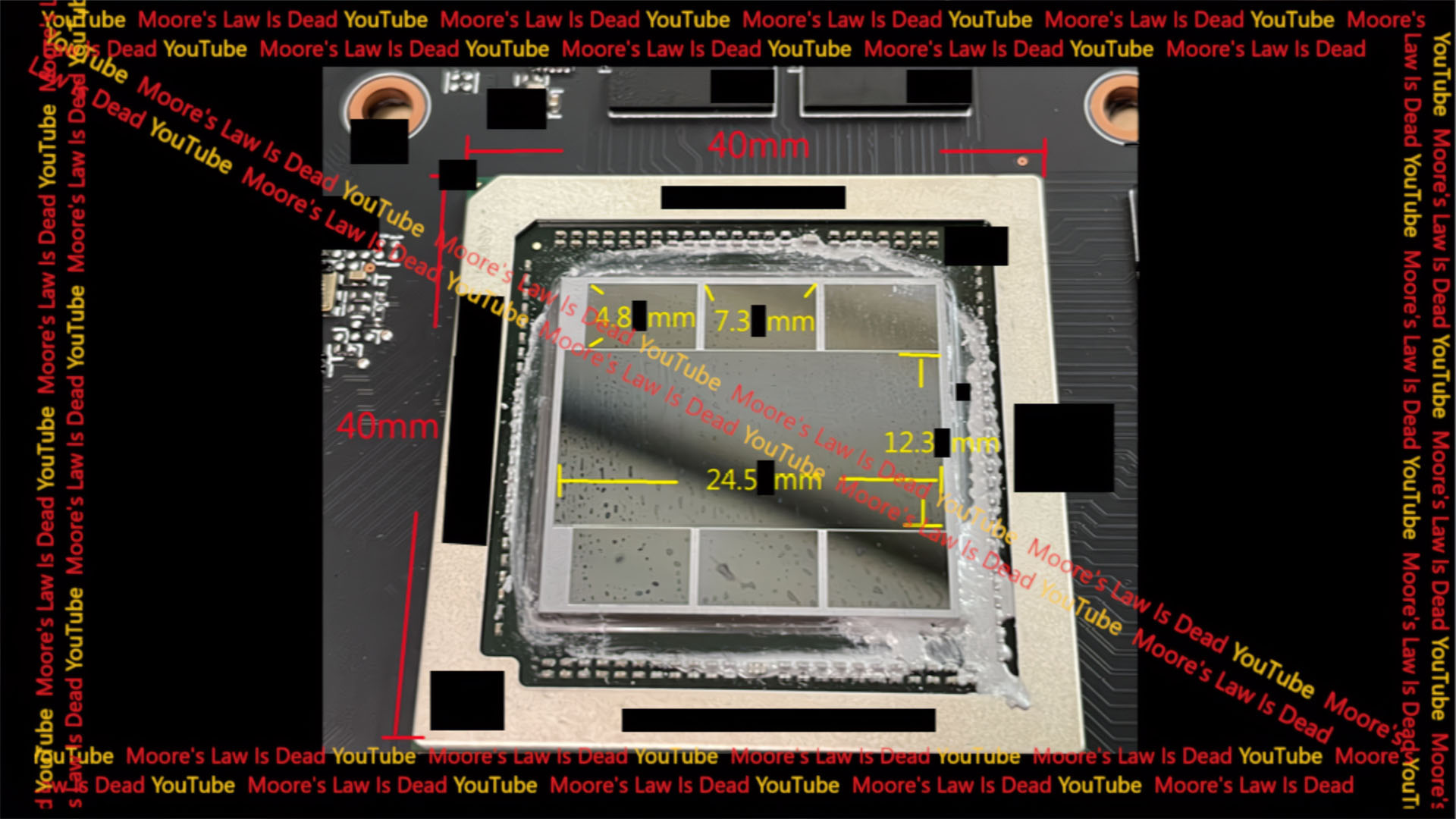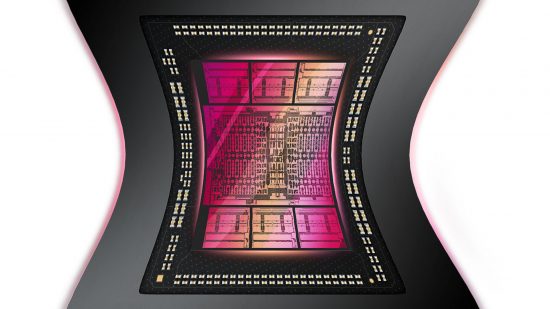If you’re looking for all the very latest information on the AMD Radeon RX 7800 XT, make sure you read our full Radeon RX 7800 XT review, where we give you our verdict on this GPU, benchmark it in a number of games against the Nvidia GeForce RTX 4070, and provide all the latest information on the specs. It has now been confirmed that the Radeon RX 7800 XT in fact uses the Navi 32 GPU.
The package of a graphics card refers to the overall combination of GPUs and other dies that are housed on a single PCB that’s then mounted to a graphics card. It’s equivalent to how a CPU package is the whole component that you buy and then plug into your motherboard when the CPU chip itself is what’s inside. In the case of the Navi 31, the package would normally consist of one GCD chip – the GPU part – and six MCD cache chips.
The existing Navi 31 package is 55 x 47.5mm but the newly revealed version measures just 40 x 40mm, even though it still retains one GCD and six MCDs. However, crucially, two of the MCDs are dummy dies that are only used to help even out pressure on the other chips.

The package size leak comes via youtuber Moores law is dead
This loss of MCDs means the new package has a reduced 256-bit memory bus, down from the 384-bit bus enabled by the six MCDs of existing Navi 31 designs. By combining this reduced memory bandwidth with Navi 31 GCDs that have several compute units disabled or have reduced clock speeds, the overall thermal stress on the package is reduced, allowing it to be reduced in size overall.
The end result is that this package could be a signal that the RX 7800 XT could use some sort of reduced-performance Navi 31 GPU rather than using a brand new Navi 32 die. We still expect there to be a Navi 32 GPU but this could be retained for an even lower-power product.
These numbers would also tally with other RX 7800 XT leaks we’ve seen previously that suggest it will be a 16GB VRAM card with a 256-bit memory interface and have 60-64 compute units. If it has 60 compute units, that would give it 3,840 stream processors and 60 corresponding ray tracing cores.
Currently, AMD‘s graphics card stack consists of the $999 RX 7900 XTX, the $889 (widely now $799) RX 7900 XT, and the $269 RX 7600 (the best graphics card for under $300), so there’s a huge price gap for AMD to fill. The smaller-package Navi 31 cards could slot nicely in at $600-$650 while a Navi 32 card could fill the $400-$500 range.
Ultimately, whatever GPU is actually under the hood will be largely irrelevant when consumers come to buy these cards, as what actually matters is real-world performance and power consumption, which of course is what we’ll be testing when the cards do finally arrive.
Are you excited for a $400-$600 AMD graphics card or has the $600 Nvidia GeForce RTX 4070 already tempted you? Let us know your thoughts on the Custom PC Facebook page, via Twitter, or join our Custom PC and Gaming Setup Facebook group and tap into the knowledge of our 390,000+ members.
